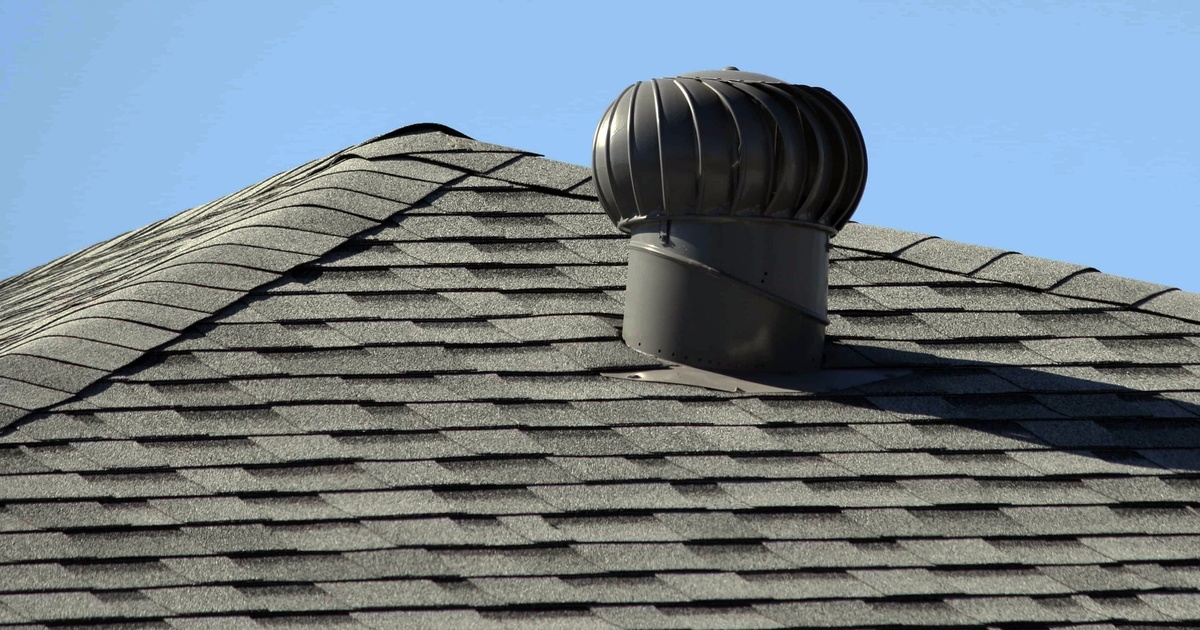Why Correct Ventilation Matters in Plumbing Systems
Schedule Service PickupAlmost everyone may have their personal theory when it comes to What Are Plumbing Vents and Why Are They Important?.

Proper air flow in plumbing systems is usually overlooked, yet it is essential for preserving the functionality and safety and security of your home's plumbing. Ventilation aids regulate air pressure, protect against the build-up of dangerous gases, and guarantee the efficient elimination of waste. In this guide, we will discover the value of proper plumbing air flow, how it functions, and the benefits it brings to your plumbing system.
Exactly How Ventilation Functions in Pipes Solutions
Air Pressure Regulation
Proper ventilation preserves balanced air pressure within the plumbing system. When water flows via pipes, it displaces air. Without ample air flow, this displacement can produce negative pressure, causing slow drains or siphoning of water from traps, which can cause unpleasant smells to seep into the home.
Preventing Sewage System Gas Build-up
Among one of the most crucial features of pipes vents is to prevent drain gases, such as methane and hydrogen sulfide, from building up within the home. These gases can present serious health and wellness dangers and are very flammable. Vent pipelines enable these gases to get away securely outside.
Assisting in Waste Removal
Ventilation assists in the reliable elimination of wastewater by avoiding airlocks in the drainage system. When air can move easily via the vents, it permits water and waste to flow smoothly via the pipelines, minimizing the risk of blockages and back-ups.
Advantages of Correct Air Flow
Enhanced System Efficiency
Properly aerated pipes systems operate more successfully, with less clogs, faster draining, and less strain on the pipes. This performance prolongs the life expectancy of the plumbing system.
Improved Air Top Quality
By avoiding sewer gases from entering your home, appropriate air flow contributes to much better interior air top quality, making your living environment healthier and much more comfortable.
Stopping Water Damages
Ample air flow helps protect against water from being siphoned out of traps, which can result in sewer gases going into the home and triggering water damage with time.
Actions to Make Sure Proper Air Flow
Consulting Pipes Codes
Constantly consult local pipes codes when designing or modifying your pipes system. These codes offer the needed standards for proper venting and guarantee your system meets safety requirements.
Routine Assessment and Upkeep
Regular evaluations can assist determine possible air flow problems prior to they end up being major troubles. Maintenance tasks, such as cleansing vent pipes and looking for blockages, are crucial for keeping the system in good working order.
Specialist Installation
For brand-new installments or significant alterations, it's smart to employ a professional plumbing professional. They have the knowledge to make certain the ventilation system is appropriately designed and mounted according to code.
Comprehending Air Flow in Plumbing
Ventilation in pipes refers to the network of pipes that enable air to stream via the drainage system. These vents serve multiple functions, consisting of regulating air pressure within the pipelines, avoiding sewer gases from getting in the home, and helping in the smooth circulation of wastewater.
Sorts Of Pipes Vents
Main Heap Vent
The major pile vent, also known as the vent stack, is the main vent in a plumbing system. It expands from the major drainpipe line up with the roofing, allowing gases to run away and fresh air to get in the system.
Branch Vent
Branch vents attach to the main pile air vent and serve individual components, such as sinks, commodes, and showers. These vents guarantee that each fixture has sufficient ventilation to work effectively.
Air Admission Shutoff (AAV).
An Air Admission Shutoff (AAV) is a one-way shutoff that enables air to get in the pipes system without the need for a traditional air vent pipe extending with the roofing. AAVs are typically used in improvements or locations where setting up a standard air vent is impractical.
Indicators of Poor Ventilation in Plumbing.
Slow Draining Fixtures.
If your sinks, bathtubs, or commodes are draining slowly, it could be an indication of poor ventilation. Inadequate air flow can develop a vacuum impact, making it challenging for water to drain pipes effectively.
Gurgling Appears.
Gurgling noises coming from drains pipes are usually an outcome of air being drawn with water traps as a result of negative stress in the pipelines. This is a clear sign of insufficient air flow.
Undesirable Odors.
Drain smells inside your home are a warning that your plumbing system is not correctly ventilated. This might indicate that sewer gases are not being appropriately aired vent outside, leading to potentially harmful conditions.
Typical Ventilation Blunders.
Inadequate Vent Sizing.
Using undersized air vent pipes can lead to inadequate air circulation and pressure imbalances in the system. It's important to use vents that satisfy the particular demands of your plumbing system.
Improper Vent Positioning.
Putting vents as well much from the components they serve can decrease their effectiveness. Proper positioning ensures that air can flow easily and effectively with the system.
Disregarding Code Requirements.
Building regulations give specific guidelines for plumbing ventilation. Disregarding these codes can cause a system that stops working to work appropriately and may result in expensive repairs or health hazards.
Conclusion.
Correct ventilation is a critical element of any kind of pipes system, ensuring that it operates efficiently and securely. By understanding the importance of air flow, identifying the signs of bad air flow, and taking actions to keep your system, you can protect against costly issues and safeguard your home's air high quality.
4 Things You Should Know About Your Plumbing Vents
What Plumbing Vents Are
Also called a vent stack, a plumbing vent is a vertical pipe attached to your drain line that runs through your roof. The plumbing vent pipe, or plumbing air vent, removes gas and odors from your plumbing system and allows fresh air to enter the pipes, helping the water to flow out of the drain pipes.
What Plumbing Vents Do
Plumbing vents have two basic functions. One of which is to allow unpleasant smelling wastewater and sewer gasses to escape your plumbing system instead of entering your home. Plumbing vent pipes are typically located on roofs, away from windows, to ensure the fumes exit the home completely.
The other function of the plumbing vent is to move fresh air into your plumbing system. This helps move water through every plumbing fixture in your house, like toilets and sink drains. Think of the way in which you need to let a little air into the bottle as you pour soda in order to make the drink flow smoothly.
Different Types of Plumbing Vents
True vent: This is the most common vent option. In simplest terms, a true vent is a vertical pipe attached to your drain line that exits through the roof. They often function as the main vent that other fixtures can connect to. Re-vent pipe or auxiliary vent: Attached to the drain line near specific plumbing fixtures, re-vent pipes run up and over to connect to the main vent. Common vent: Two plumbing fixtures installed on opposite sides of a wall are typically tied into the vent stack using something known as a sanitary cross. Wet vent: This venting option operates as a drain pipe and a vent at the same time. Wet vent drainage systems drain water from one fixture while venting the air from another. Although they’ve been used for over 100 years, wet vent systems have only recently been added to the plumbing code in many areas. If you’re planning on installing one in a bathroom remodel, make sure you check your local code prior to construction. Loop vent: For free-standing fixtures like kitchen island sinks, loop vents are ideal. These vent pipes run under the floor, rise from the P-trap, and create a loop inside the cabinet sink. Air admittance valve: An AAV is a one-way mechanical valve typically installed at the site of the plumbing fixture. AAVs allow venting to occur without having to tie into a larger venting system. They’re ideal for venting fixtures where you aren’t able to easily connect to an existing vent system. Common Plumbing Vent Issues
Although vent pipes typically don’t have water flowing through them, they’re still subject to many typical plumbing issues. For example, clogs are one of the most common problems associated with sewer vent pipes. If your vent pipe gets clogged, all of your plumbing fixtures tied into the vent stack will be affected.
A sink with a slow drain that bubbles and gurgles or a strong sewage smell around your toilet are both indicators that your toilet vent pipe is clogged. Because most vent pipes exit through the roof, old leaves, twigs or even a bird’s nest could be clogging the pipe.
Clogs in your vent pipe system cause a buildup of negative pressure, meaning that water won’t be able to flow out of your home very well. It’s similar to putting your finger over the opening of a straw to trap water inside. When you remove your finger, the water is able to flow out of the straw.
If you suspect you have any blockage in your vent, make sure you have a professional come examine the situation. Left unchecked, a blocked air vent can lead to other costly repairs, like leaks and sediment buildup.
Under Pressure
Pipe vents are essential aspects of a home’s plumbing system. Owning a home means learning about all sorts of things you never put much thought into before. But by understanding as much as you can about the important systems of your home, you can keep those budgets intact and those anxiety levels low.
https://www.homeserve.com/en-us/blog/home-improvement/plumbing-vents/

I am very fascinated with Why Plumbing Air Vents Are Important and I'm hoping you enjoyed reading our page. Sharing is nice. You just don't know, you could be helping someone out. Thank you so much for taking the time to read it.
Explore